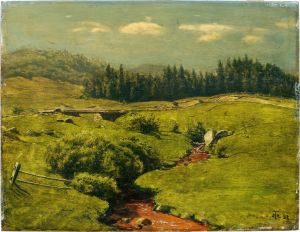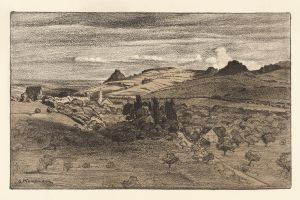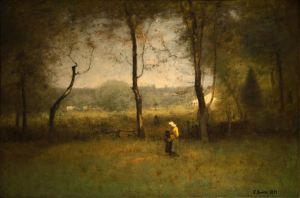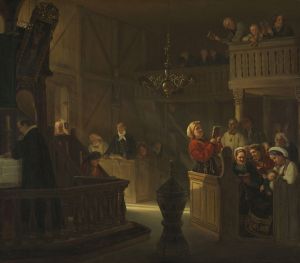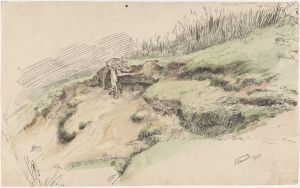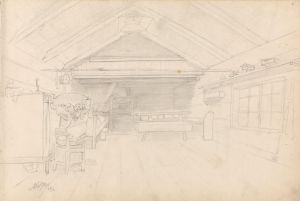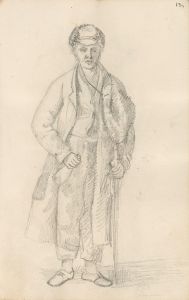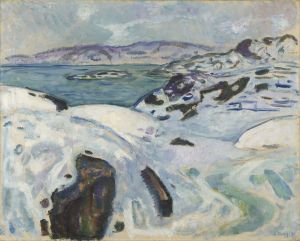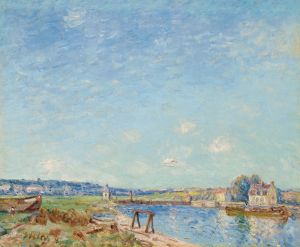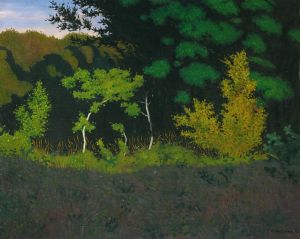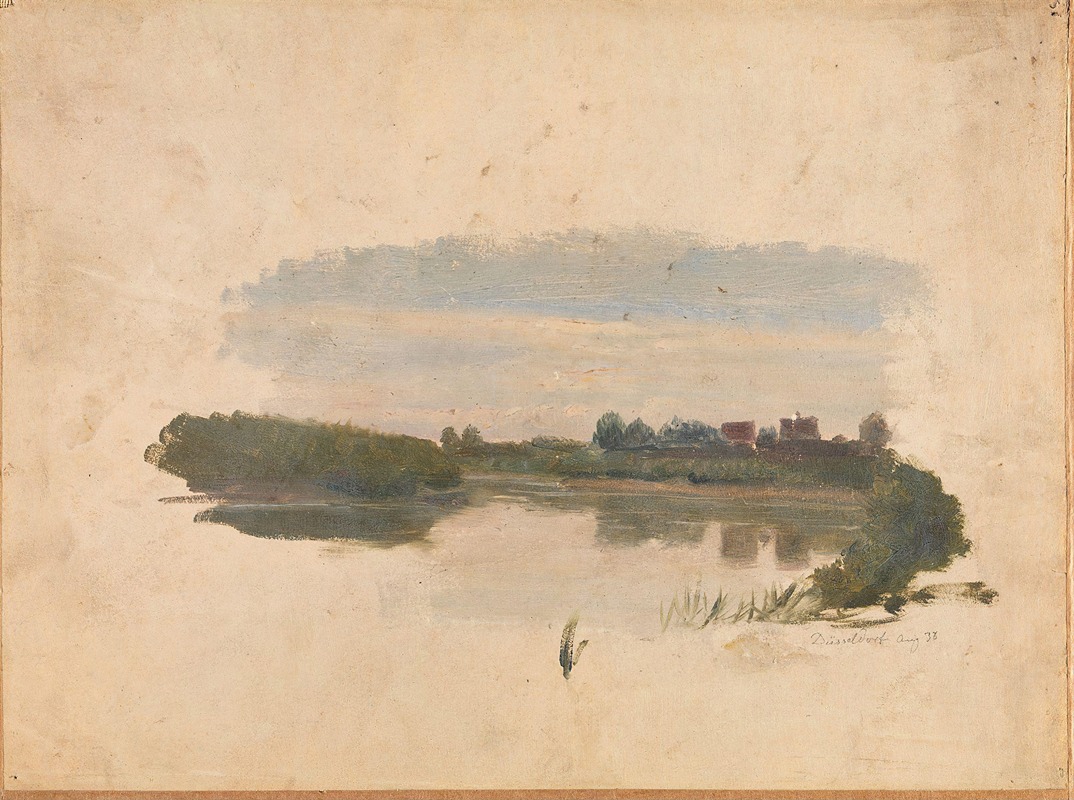
Landscape Study
A hand-painted replica of Adolph Tidemand’s masterpiece Landscape Study, meticulously crafted by professional artists to capture the true essence of the original. Each piece is created with museum-quality canvas and rare mineral pigments, carefully painted by experienced artists with delicate brushstrokes and rich, layered colors to perfectly recreate the texture of the original artwork. Unlike machine-printed reproductions, this hand-painted version brings the painting to life, infused with the artist’s emotions and skill in every stroke. Whether for personal collection or home decoration, it instantly elevates the artistic atmosphere of any space.
"Landscape Study" is a painting by the Norwegian artist Adolph Tidemand, who is best known for his detailed and evocative depictions of Norwegian folk life and landscapes. Born on August 14, 1814, in Mandal, Norway, Tidemand became one of the most prominent painters of the 19th century in Norway, contributing significantly to the national romantic movement in Norwegian art.
Adolph Tidemand studied at the Academy of Fine Arts in Copenhagen from 1832 to 1837 and later at the Kunstakademie Düsseldorf, where he was influenced by the Düsseldorf school of painting. This school emphasized detailed, realistic portrayals of subjects, often with a focus on historical and genre scenes. Tidemand's works often reflect this influence, combining meticulous detail with a romanticized view of Norwegian rural life.
"Landscape Study" exemplifies Tidemand's skill in capturing the essence of the Norwegian landscape. Although specific details about the creation date and exact location depicted in "Landscape Study" are not widely documented, the painting is consistent with Tidemand's broader body of work, which frequently features the natural beauty of Norway. His landscapes often include elements such as rugged mountains, serene fjords, and lush forests, all rendered with a keen eye for detail and a deep appreciation for the natural environment.
Tidemand's approach to landscape painting was not merely about replicating what he saw but also about conveying the atmosphere and mood of the scene. His use of light and shadow, along with his careful attention to the textures of natural elements, helps to create a sense of depth and realism. This technique allows viewers to feel as though they are stepping into the scene themselves, experiencing the tranquility and majesty of the Norwegian countryside.
In addition to his landscape studies, Tidemand is well-known for his genre paintings, which depict everyday life and customs of Norwegian people. These works often include detailed portrayals of traditional Norwegian costumes, interiors, and activities, providing a valuable historical record of 19th-century Norwegian culture. Some of his most famous works in this genre include "Haugianerne" (The Haugeans) and "Bridal Procession on the Hardangerfjord," both of which highlight his ability to blend narrative and landscape elements seamlessly.
Throughout his career, Tidemand received numerous accolades and his works were exhibited widely, both in Norway and internationally. His paintings played a significant role in shaping the national identity of Norway during a time when the country was seeking to assert its cultural independence. Tidemand's art not only celebrated the natural beauty of Norway but also its cultural heritage, making him a key figure in the development of Norwegian national romanticism.
Adolph Tidemand passed away on August 25, 1876, but his legacy continues to be celebrated in Norway and beyond. His works remain an important part of Norwegian cultural history, and "Landscape Study" stands as a testament to his skill and dedication as an artist who captured the spirit of his homeland with remarkable clarity and emotion.





